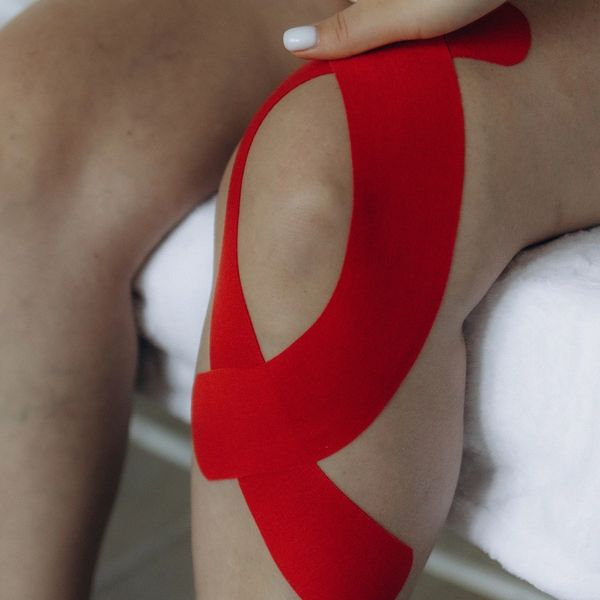Treatments and Modalities

Deep Tissue Massage for Athletes & Active Clients
Deep tissue massage is a focused, therapeutic technique that targets the deeper layers of muscles, fascia, and connective tissue. It’s designed to break up adhesions, release chronic tension, and improve muscle function and mobility.
Benefits
Releases tight, overworked muscles
Reduces inflammation and improves circulation
Speeds up recovery and enhances performance
Helps correct imbalances from repetitive use or poor posture
Supports injury prevention and rehabilitation
What to expect:
This is not a full-body relaxation massage. The pressure is firm and intentional, often focused on problem areas like the shoulders, back, hips, or legs. You might experience some discomfort during the session, especially in areas with chronic tension—but the goal is therapeutic relief, not pain. Communication is key; we’ll adjust pressure as needed.

Deep Tissue Massage for Relaxation & Therapeutic Relief
Deep tissue massage is a slow and intentional form of massage therapy that works into the deeper layers of muscle and fascia. It helps release chronic tension, improve circulation, and support your body’s natural healing process.
Benefits
Relief from tension and knots
Improved posture and range of motion
Reduction in stress-related muscle pain
Support for chronic pain conditions (e.g., headaches, back pain, sciatica)
What to expect:
The massage may feel intense in areas of tension, but it should never feel painful. You may feel some soreness afterward—similar to a good workout—which usually fades within 24–48 hours.

Cupping Therapy
Cupping therapy is a treatment that uses suction to gently lift the skin and underlying tissues. This technique helps reduce muscle tension, increase blood flow, and support the body’s natural healing response.
Whether you’re an athlete needing recovery support or someone dealing with everyday stress and tightness, cupping can be tailored to your specific needs. It works by decompressing the muscles and fascia, helping to release restrictions, improve mobility, and calm the nervous system.
Benefits
Relieves muscle soreness and tightness
Enhances circulation and lymphatic flow
Speeds up recovery from training or injury
Reduces stress and promotes relaxation
Improves range of motion and soft tissue health
What to Expect
You may feel a light to moderate pulling sensation where the cups are placed. They may stay stationary or be gently moved across the skin. Circular marks may appear afterward—these are not bruises, but signs of increased blood flow, and usually fade within a few days. Each session is customized based on your comfort, condition, and goals

Kinesiology & Athletic Taping
Taping is a supportive therapy that works hand-in-hand with massage to enhance recovery and performance.
- Kinesiology Taping (K-Tape): A flexible, elastic tape that mimics the skin’s natural movement. It helps reduce pain and swelling, supports circulation, improves posture, and provides gentle support to muscles and joints—all while allowing full range of motion. K-Tape is often applied after massage to extend the benefits of treatment and assist with healing between sessions.
- Athletic Taping: A more rigid style of taping designed to stabilize and protect joints or muscles during activity. Commonly used by athletes, this method helps prevent re-injury, restricts harmful movements, and provides the extra stability needed for high-demand sports or acute injuries.
Both methods are effective adjuncts to massage therapy, offering clients continued support, faster recovery, and greater confidence in movement.

Graston Technique / IASTM
The Graston Technique is a specialized form of IASTM therapy that uses smooth, stainless steel tools to gently “scrape” or glide over the skin. This helps identify and break down areas of tension, scar tissue, or adhesions in your muscles and fascia (connective tissue).
It’s especially useful for treating tight or restricted areas caused by overuse, injury, or poor posture.
By stimulating blood flow and releasing stuck tissue, the Graston Technique can help improve movement, reduce pain, and speed up recovery.
Benefits
Releases muscle and fascia restrictions
Reduces chronic pain and tightness
Improves range of motion and flexibility
Speeds up healing after injuries or repetitive strain
Breaks down scar tissue and adhesions
What to Expect
You may feel a scraping or rubbing sensation as the tool moves across the skin. Some areas might feel tender, especially if the tissue is restricted, but treatment is always adjusted to your comfort. You may notice some redness or mild bruising afterward—that’s a normal sign of increased circulation and healing.

Now Practising CranialSacral Therapy Level 1
CranioSacral Therapy is a gentle, hands-on therapy that focuses on the rhythm and movement of the craniosacral system—which includes the membranes and fluid that surround and protect the brain and spinal cord.
This helps the body naturally relax, unwind tension, and restore balance.
How It Works:
By gently working with the skull, spine, and sacrum (tailbone), CST helps release restrictions that may be affecting the central nervous system. It supports the body’s own healing process—both physically and emotionally—by enhancing the flow of cerebrospinal fluid and improving communication between the brain and body.
What to Expect:
You’ll remain fully clothed while lying comfortably on a massage table. The practitioner will place their hands lightly on specific areas of your body—often your head, spine, or pelvis. Most people find CST deeply calming, and some enter a meditative or sleep-like state during the session.
This gentle work often has powerful effects, and it is especially helpful for those who may not respond well to deeper, more aggressive bodywork
This website uses cookies.
We use cookies to analyze website traffic and optimize your website experience. By accepting our use of cookies, your data will be aggregated with all other user data.